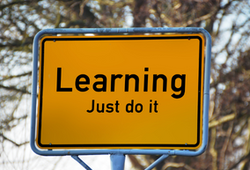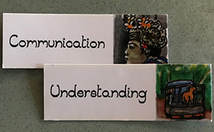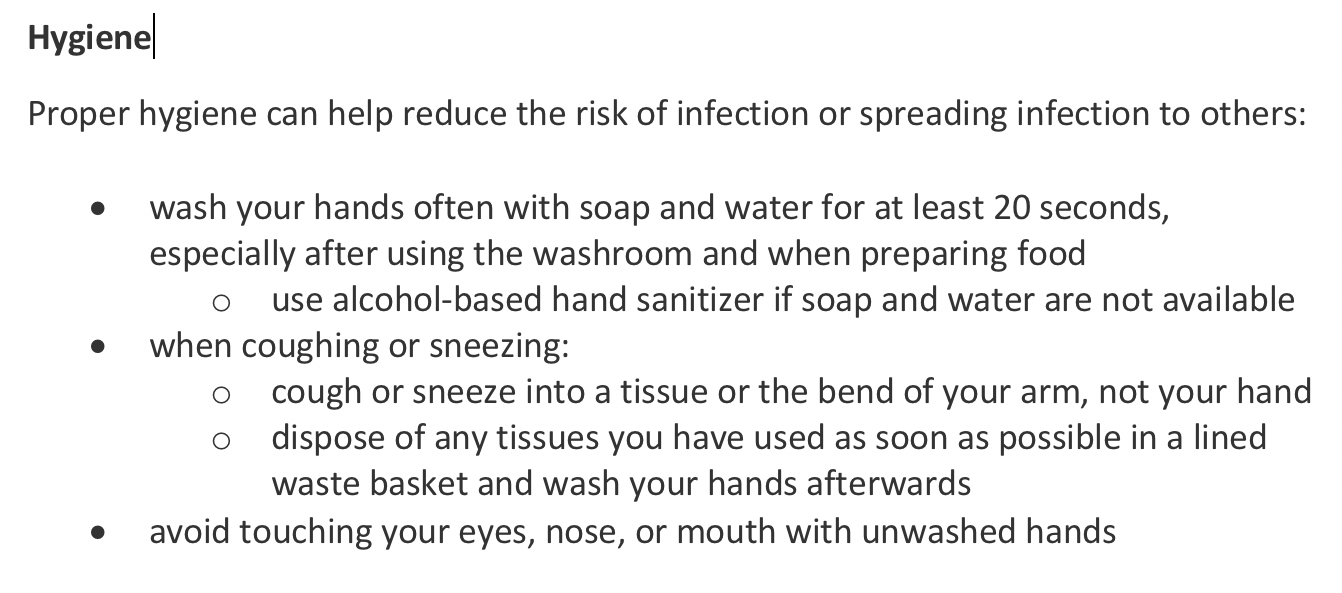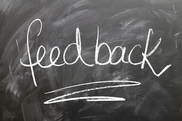 Learning. Just do it. Learning. Just do it. PlainLanguageAcademies.com Newsletter 23-01 Ready for 2023 The Plain Language Academies team is looking to the future with excitement and energy. Our French Academy, clairetsimple, is offering its first course; the much-anticipated ISO standard is coming; and, the PLAIN 2023 Conference, Connecting Cultures – building bridges with clear communication in Buenos Aries, Argentina, in September. We are constantly identifying new training needs and creating courses to address them. Let us guide you on your 2023 plain language journey. Welcome to l'Académie du langage clair et simple We welcome the first course from our French Academy, with the award-winning plain language advocates and trainers Chantale Audet and Amélie Bourret, autrementdit.ca. The Plain Language Academies are pleased to announce the new clair et simple’s online training course in French on Zoom. The training is entitled Writing Clearly to be Understood on First Reading. Students will learn what health literacy is and how to address and reinforce it with plain language. · For more information and to register on Eventbrite: https://bit.ly/3xyOfHc. · To email the L’Académie du langage clair et simple: [email protected]. · Visit their page on PLA: Académie du langage clair et simple . ********************************************************** Bienvenue à l'Académie du langage clair et simple L’Académie du langage clair et simple est heureuse d’annoncer la tenue d’une formation en ligne en français sur Zoom. La formation est intitulée Rédiger clairement pour être compris à la première lecture. Dans cette formation, vous apprendrez ce qu’est la littératie en santé et verrez comment la prendre en compte et la renforcer avec le langage clair et simple. Cette formation est divisée en quatre parties : · Le contexte d’information d’aujourd’hui · Qu’est-ce que la littératie et la littératie en santé ? · Le langage clair et simple · Les 6 étapes pour écrire en langage clair et simple: volet pratique composé d’exercices La formation est répartie sur 2 journées : · Mardi 25 avril 2023, de 9 h à 11 h 30 · Jeudi 27 avril 2023, de 9 h à 11 h Pour obtenir plus d’information et pour vous y inscrire sur Eventbrite :https://bit.ly/3xyOfHc. Pour contacter l’équipe de l’Académie du langage clair et simple: [email protected] Details are on the PLA website New help creating clear design online Our new course, Clear Digital Design is available now. It’s for non-designers who find themselves needing to make design-related decisions. Annie and Liezl, heyplainjane.com, will help strengthen your clear design skills to prepare you for working on your next project. Find our more from them or email PLA. Register here. Pick the PLA courses that will get you to your destination We are expanding our base of Core and Advanced courses to meet increasing knowledge and skill demands. Check PLA 2023 Calendar to find courses just for you. We are here to help. Get in touch if you have questions. Looking forward to connecting, PLA Team PS Our newsletters will now be posted as blogs. PLA.com Newsletter Blog 23-01 [email protected] Email to unsubscribe
0 Comments
More languages, more accessibility
English courses with Kate and the Plain Language Academy team continue to expand at plainlanguageacademy.moodlecloud.com/. Want to study in French? Chantale Audet and Amélie Bourret, from Autrement dit, are soon opening the doors to our French Academy, Clair et Simple. Wish to study plain language in Spanish? Romina Marazzato Sparano, from Language Compass, has set up our Spanish Academy at educlaro.moodlecloud.com. Join in the learning, choose the language you prefer, and enjoy. Learn to be a strategic plain language planner The first Plain Language as a Strategic Priority Advanced course was a huge success. One student wrote: “Thank you for a fantastic course. This perspective on Plain Language is quite unique. I’ve learnt a lot.’’ Now the course is back for a second offering of advice and practice on how to integrate plain language into your organization through strategic planning. Sarah Slabbert and Nadja Green, Plain Language Institute, SA, bring a wealth of experience and will share it in the course materials, activities and discussions. The course equips you with a portfolio of planning documents and skills to implement plain language in your organizations. You can still join in. Register now. Three easy steps to enrol on Moodle All three academies are running on Moodle. You first need your own Moodle account to register and gain access to courses.
Email [email protected] or your Academy’s contact if you need help. Welcome/Bienvenue Des nouvelles de l’Académie du langage clair et simple Vos documents sont-ils en langage clair et simple ? Autrement dit vous offre la possibilité de participer à un atelier pratique pour le découvrir. Rien de mieux que de vous pratiquer sur vos propres documents pour poser vous-même un diagnostic. Qui est le public visé par votre communication ? Votre objectif est-il clair ? Comment pouvez-vous améliorer la structure de votre document, la façon de l’écrire et sa présentation visuelle ? Assistez à cet atelier pratique pour savoir comment répondre à toutes ces questions ! Titre : Vos documents sont-ils en langage clair et simple ? Atelier pratique pour faire votre propre diagnostic Animation : Amélie Bourret et Chantale Audet, Autrement dit. Coût : Gratuit Quand : Surveillez les fils PlainLanguageAcademies.com, LinkedIn, et Facebook pour connaître la date exacte. Pour plus d’information : [email protected] Gracieuseté de Plain Language Academies News from Académie du langage clair et simple Are your documents in plain language? Autrement dit gives you the opportunity to participate in a workshop to find out. Nothing better than practicing on your own documents to make an assessment yourself. Who is the target audience for your documents? Is your purpose clear? How can you improve the structure of your document, the way you write it and its visual presentation? Attend this hands-on workshop to find out how to answer all these questions! Title: Are your documents in plain language? Workshop to make your own assessment Workshop facilitators: Amélie Bourret and Chantale Audet, Autrement dit. Cost: Free When: During the International Plain Language Week in October 10-16, 2021 Watch the Plain Language Academies website, LinkedIn and Facebook for the date. For more information: [email protected] An academy within the Plain Language Academies Welcome/Bienvenidos Noticias sobre la Academia de Lenguaje Claro El programa en español de las Academia de Lenguaje Claro abre este otoño con un curso sobre alfabetización en salud. Como se evidencia ante esta nueva realidad de Covid-19, la alfabetización en salud es ahora más importante que nunca. La falta de comprensión y conocimientos sobre la salud lleva a sufrir consecuencias reales. Nuestra Academia de Lenguaje Claro, EduClaro, se ve fortalecida por la diversidad de perspectivas que aportan estudiantes e instructores provenientes de todo Estados Unidos, América Latina y España. ¡Te invitamos a unirte a nuestros cursos! Mantente actualizado en el sitio web de Plain Language Academies, LinkedIn y Facebook. Romina Marazzato Sparano, [email protected] An academy within the Plain Language Academies News from Academia de Lenguaje Claro The Spanish program at Plain Language Academies is launching this Fall with its Health Literacy course. As we continue to navigate the new Covid-19 reality, health literacy skills are now more important than ever! Without health literacy, people can suffer real consequences. Our Academia de Lenguaje Claro, EduClaro, is strengthened by the diversity of backgrounds and perspectives represented in students and instructors who come from across the United States, Latin America, and Spain. We invite you to join our courses! Watch the Plain Language Academies website, LinkedIn, and Facebook for upcoming info. An academy within the Plain Language Academies Academies team wins PLAIN Innovation Award “The best part of winning the Plain Language Association International Cheryl Stephens Innovation Award was sharing it with the whole Academies team,” said Kate Harrison Whiteside, Academies director. “With the Spanish and French academies coming this fall, more courses offered through Plain Language Institute, SA, and new options, our confidence in having a long-term, positive impact on plain language learning is growing, along with our students.” “Brilliant, Kate! We’re very proud to be part of your team.” Sarah Slabbert and Nadja Green, Plain Language Institute, SA. Find out more on plainlanguageacademies.com or email [email protected] by Nicole Watkins Campbell Editing for Plainer Legal Writing Instructor The best way to ensure your document meets readers’ needs is to test it with the audience. Even testing that is quick and cheap can give you useful information about how to improve your document. What is a test? A test can be as simple as asking a colleague or a citizen to answer one question about your text or as complicated as inviting 30 people to read your document and answer questions. Almost any test will help you make the writing better. And any test with a member of your audience will get you closer to writing that works for your readers. When should you test? Start testing as soon as you have enough material to test. Don’t wait until your document is complete unless it’s a short email. Make corrections based on feedback, and test again, if you can. The best practice is to test a couple of times, and more if the text is important and could be difficult for your readers. How should you test? Several methods will help you improve your document.
Record your results in some way:
Who should you recruit?
Testing documents internally with co-workers while you’re still writing is highly useful. You can then test a final draft with someone from outside your team. Your co-workers will likely read about as well as you do and have the same technical understanding, so you will want other perspectives on the complexity of the language and the topic. Don’t test with people who know the information in the document or people who helped you get to this point in creating this document. They will know too much about your subject area to notice what’s missing or out of place. Readability measures Your word processor or a website like Hemingway Editor will offer quick readability tests. But these long-established ways of describing how readable a text is actually don’t mean much. They were originally created to measure children’s reading skills, not documents for adults. The software counts syllables (to represent complexity in language), words and paragraphs (to represent complexity in expression) to roughly estimate reading difficulty. The resulting number claims to reflect the number of years of education a person needs to read the text. Readability measures fail in three main ways:
If your text readability score from Microsoft Word or Hemingway Editor is gets a Grade 10 or higher, you probably need to edit for clarity: many people don’t read at this level. If you test again, you will be able to see if your changes made your sentences easier to read, but you should rely on other methods to make sure your text is clear. Try setting up a simple test of a bit of writing this week. You will learn something surprising or pleasing. But you will learn something. Nicole Watkins Campbell with Sarah Slabbert and Nadja Green, Plain Language Institute, SA We are just finishing up the first offering of our Advanced course on strategic planning for plain language. It is also the first course offered on the Academy's new Moodle platform. Implementing Plain Language in an organization is almost invariably a challenge and there is not a one-size-fits-all solution. Most of our students have practical experience of this challenge and they therefore expect the course to offer solutions that they can apply. Moodle enables us to listen to our students in one-on-one conversations and to understand their unique needs. Moodle also makes it easy for us to continuously improve our course and add new learnings as we go along. We enjoyed working with Moodle and students are giving us positive feedback. Sarah and Nadja. NextA5 Implementing Plain Language as a Strategic Priority starts August 16. Academy reflects plain language principlesThe Academy strives to be like plain language itself.
1. go to plainlanguageacademy.moodlecloud.com, 2. create your account 3. choose and register for your courses. You will have access the day the course starts. If you have any questions or issues, contact [email protected] Choose from our three Core courses on Basics, Audiences, and Writing and Editing. Or, select an Advanced course suited to your current or upcoming needs. Topics include creating e-content, legal editing, health literacy, design, testing, science, and strategic planning. More are coming. We are so excited about our new platform, we just want everyone else to share the experience. Plain Language Academies (PLA) expandsNew courses, languages, instructors, opportunitiesPlain language knows no boundaries: so we are expanding ours to offer plain language courses in French, Spanish, and in South Africa. We want plain language to be everywhere because we know it is for everyone. 'New' is a key word for today's personal and work lives. The Plain Language Academies' team is creating more ways to share our skills and meet your growing needs for clear communication. Take advantage of current Core and Advanced courses at last year's fees. We encourage you to explore Advanced courses that tackle specific topics like clear health, legal, science, strategic planning, and online communication. New courses are coming. keep visiting us PlainLanguageAcademy.com for details and sign up for our newsletter. We are looking forward to meeting you online, sharing skills, and learning about your interests. Courses to take you forward Our courses are designed to keep your clear communication skill development focused on the future. New fees are planned for future courses. Here are brief profiles of a few courses you can consider. Clear Design Practices with Flora Gordon, (you can still sign up), explores the important role design plays in our communications and ways you can make design enhance your messages. Plain Language 2.0 and Health Literacy, never been more important. Romina Marazzato Sparano shares her expertise. Available in English (now) and Spanish (soon). Everyone is online and we need to be clear and meet their needs. Kate Harrison Whiteside brings her years of plain language use online experience to you in Creating Clear E-content. New: Implementing Plain Language as a Strategic Priority with Sarah Slabbert and Nadja Green, Plain Language Institute, South Africa. The focus of plain language is often on specific documents or pieces of communication. Implementing plain language in a systematic manner in an organization is a different challenge for executives, compliance officers, communication managers, or customer relations. This course will empower you to make your organization truly customer- or citizen-centred. See Courses for current course registration links Three good reasons to work on legal editing by Nicole Watkins Campbell We have three good reasons to work on your legal writing and editing skills this year. 1. New year–new you. New learning ALWAYS refreshes. 2. It will keep your mind busy during a potentially slow period. Learning ways to sharpen your writing or editing skills is always useful, especially if you have time to devote to deep study, like during a slow period at work. 3. It will give you little breaks during a potentially busy period. You can study at your own pace over about six weeks, even though it’s a four-week course. You can chat with other students or with me, your instructor, on issues that challenge you. In fact, I’ll help you on a thorny document, if you’d like. Learning is good for your brain and enhancing skills is good for your career. Join me for A2 Editing for Plainer Legal Writing Help us plan your future learning
The PLA team is so committed to the future of plain language, of enhanced learning, and of building connections. We are always looking for ways to improve plain language practices, skills, and projects. We keep broadening our program to meet new needs we are all facing. If you would like to see a new course, offer a new course, or access our coaching and consulting services, please get in touch. Contact [email protected]. English, Français, Español and South African CollaborationsAcademy becomes Academies 2021 will bring a new vision. More options. The PlainLanguageAcademy.com is now Plain Language Academies. We are adding new courses and new languages and new collaborations to meet your needs to learn in more ways. More options, greater access Our language options will soon include French (Français) and Spanish (Español) courses, with a new collaboration in South Africa focused on plain language strategy skills. We are growing so you can expand your learning and your horizons. More Advanced courses to increase your options We are here to help you build new skills for your plain language portfolio and future. Topics include online content, health, legal, and the science of plain language. Coming soon: strategic planning and document assessment. Advanced courses to meet tomorrow's challenges Register now for our fall offerings of Creating Clear E-content, Editing for Plainer Legal Writing, and Plain Language 2.0 and Health Literacy. Cheryl Stephens is back with Science Supports Plain Language. Flora Gordon is delivering Clear Design Practices. Core courses are open now for registration. Visit our Calendar for dates and links. New collaborations Académie du langage clair et simple Meet our Français (French) team Chantale Audet et Amélie Bourret, d'Autrement dit, une entreprise québécoise qui offre des services en langage clair et simple. Bienvenue à l'Académie du langage clair et simple Chantale Audet et Amélie Bourret, d’Autrement dit, ont développé un cours d’initiation au langage clairet simple, en français. Ce cours, Introduction au langage clair et simple, sera proposé à partir dudébut de l’année 2021. Chantale Audet and Amélie Bourret, d'Autrement dit, a Quebec consulting firm that offers services in plain language, have developed an introductory French plain language course. The course, Introduction to Plain Language, will be offered at the beginning of 2021. Visit plainlanguageacademy.com/academiefrancais Academia de lenguaje claro Meet our Claro (Spanish) Team Romina Marazzato Sparano and team are working hard developing a set of courses to get the Academia de Lenguaje Claro ready for you in 2021. Bienvenidos a la Academia de Lenguaje Claro Romina Marazzato Sparano, languagecompass.com, (California) is teaming up with the best instructors in the Spanish-speaking world to offer Spanish plain language courses. They include introductory courses about clear writing and specialized courses on legal, corporate, health literacy, and academic writing. Academia launches in 2021. Romina Marazzato Sparano, languagecompass.com (California) ha convocado a los mejores instructores del mundo hispanohablante para ofrecer formación en lenguaje claro en español, con cursos introductorios sobre la buena redacción y cursos especializados en redacción legal, corporativa,médica y académica. Se abrirá la inscripción a principios de 2021. Discover what's happening at plainlanguageacademy.com/lenguajeclaro Implementing Plain Language as a Strategic Priority Meet our South African team South Africa's Sarah Slabbert and Nadja Green of the Plain Language Institute are developing the new Implementing Plain Language as a Strategic Priority Advanced course (registration coming this fall; course in 2021). They will also be offering two of the existing PLA courses via their website. Plain language actions often focus on specific documents or pieces of communication. Implementing plain language in a systematic manner in an organization is, however, a different challenge for executives, compliance officers and communication managers. The new Advanced course will empower you to make your organization truly customer- or citizen-centred. Interested? Let us know at [email protected]. Stay Connected
plainlanguageacademy.com Facebook: facebook.com/plainlanguageacademy Twitter hashtag: #PlainLanguageAcademy Email: [email protected]. We'll have a great fall learning together. Kate and team [email protected] by Shelley Egan, Egan Editing  Shelley Egan is an editor and proofreader who specializes in fiction and copy editing. Before starting her own business, eganediting.com, she edited Hansard transcripts and taught ESL. The COVID-19 virus has caused global upheaval and uncertainty. Misinformation is widespread, and messaging changes as more is learned about the virus. For accurate and timely information, Canadians have been urged to consult the Government of Canada (GC) website, as well as provincial websites.1 The Canada.ca Content Style Guide requires the use of plain language for GC web content and notes, “Using plain language … makes critical information accessible and readable for everyone.”2 The reference to “everyone” is interesting because almost half of Canadians have “literacy challenges.”3 Web content assessment As an editor and former ESL instructor, I wondered about the accessibility of the GC text. The sample I examined appears on a COVID-19 FAQ page, under “Preventing coronavirus.”4 I used one of many online plain-language checklists to examine the text. Kate Harrison Whiteside (PlainLanguageAcademy.com) notes, “Checklists are important in covering the many components that make a message clear.”
Regarding language, the sample is in active voice, and there is just one idea per paragraph. However, some sentences have more than 20 words. The vocabulary could be simplified by replacing “dispose of” with “throw away,” “waste basket” with “garbage,” and “avoid touching” with “before you touch,” for example. The writing is formal rather than friendly, and the second person ("you") could be used more often to address the reader directly: “You can help reduce the risk of infection…” and “When you cough or sneeze.…” The sample’s Flesch-Kincaid Grade Level score is at the post-secondary level: 42.2 or “difficult to read.” In terms of organization, the heading “Hygiene” is one of four subheads under the heading “Preventing coronavirus.” The heading is followed by the main purpose, and a bulleted list groups the information, which is all required. However, the structure of the second bullet point —an introductory-phrase stem followed by main clauses in sub-bullets—could confuse. The use of all lower case and the lack of end punctuation also make it difficult to identify sentences. With respect to accessibility, the font size is easy to read, and the white space is ample. The left margin is justified, and the right is ragged. However, black text, rather than grey, would be easier to read. Conclusion My analysis of the GC sample text revealed that many Canadians would have difficulty accessing this important information on COVID-19 because the reading level is too high, despite the Canada.ca Content Style Guide requirement that “content intended for general audiences” should be at “grade 8 or lower.”5 User testing may not have been carried out on the text sample, and the need to post information quickly is understandable. However, user feedback could have resulted in adjustments to the language and to the organization, making it more “accessible and readable for everyone.” Helpful links Health Canada – Coronavirus disease (COVID-19) www.canada.ca/en/public-health/services/diseases/coronavirus-disease-covid-19.html Canada.ca Content Style Guide–Plain Language (from the Treasury Board of Canada Secretariat) www.canada.ca/en/treasury-board-secretariat/services/government-communications/canada-content-style-guide.html#toc6 Notes 1. www.canada.ca/en/public-health/services/diseases/2019-novel-coronavirus-infection.html?&utm (accessed April 14, 2020) 2. www.canada.ca/en/treasury-board-secretariat/services/government-communications /canada-content-style-guide.html (accessed April 8, 2020) 3. www.canada.ca/en/treasury-board-secretariat/services/government-communications /canada-content-style-guide.html (accessed April 1, 2020) 4. www.canada.ca/en/public-health/services/diseases/2019-novel-coronavirus-infection /prevention-risks.html#p(accessed April 8, 2020) 5. /canada-content-style-guide.html (accessed April 15, 2020) Presentations make for a competitive challenge. We prepare them, watch them and try to remember them. So, what makes one stand out? The use of simple, strong, clear, relatable language and images that connect with audiences. All these are key components of plain language. Here are ideas on how to increase the use of clear visuals and the impact of your next presentation. Integrating plain language guidelinesMarketingmag.com.au points out the weaknesses of presentations junky with charts, jargon and top heavy with text. Plain language guidelines can solve all these challenges. If you commit to clear language, concise messages and simple images that support your ideas, people will relate better and remember longer. Integrate plain language guidelines for your content and visuals to make your presentation memorable. Inspiring audiencesPresentation software is no longer exclusive. And, audiences come with high expectations. How can you meet them? In her article, ‘Choosing the right visuals’, Emma Bannister quotes research showing that 90% of what our brain processes is visual. A picture really can be worth a thousand words. The clear communication rules of simplicity apply here too. Rule 1: make sure the visual supports the text. Rule 2: design and present visuals that are audience-friendly. Rule 3: use real settings, people and locations whenever you can. Always ask, and preferably to a test audience, what viewers think of the content, the visuals, the presentation. Put people first and you’ll experience presentation power. After all, it is them we have to inspire. Impressions that lastPresenters can use clear design and presentation guidelines to enhance engagement. Gov.uk demonstrates how they committed to using simple slides to achieve memorable presentations. Choose a presentation style that supports clear information and visuals, and stick to it. Consistency in visuals is another way to have an impact.
Making an outstanding presentation relies on clarity, simplicity and strong visual impact. Set plain language guidelines, involve a test audience for feedback and be prepared to make changes to meet their needs. If you can confidently say you kept it simple, clear and really connected with visuals, you are heading for presentation success with some help from plain language guidelines. Want to learn more, take a PlainLanguageAcademy.com course. Editors Canada Conference 2018, May 25-27, Saskatoon: Plain Language Stream  When Frances McDormand said the words “inclusion rider”, during her Academy Awards Best Actress Oscar acceptance speech, it meant so much more than the two words themselves. Plain language is most often practiced around the written word, presented on paper or online. But, when you mix in speaker, setting, audience and context, words can take on a much more dynamic meaning. Defining "inclusion rider" Not everyone would have a clear understanding of the legal implications of the words “inclusion rider”, but would use their familiarity with each term individually. McDormand herself is reported to have only recently become familiar with this contract option. But, in their legal sense, in the acting profession, here is how Wikipedia defines them: “An inclusion rider or equity rider is a provision added to a contract of an actor to ensure that casting and production staff are more representative and meet a certain level of diversity…” When a production company agrees to this rider, but doesn’t meet it, consequences can result. So, you take two plain words, mix in a legal connotation, and their meaning and impact can greatly change. Plain speaking and presentation impacts Inclusion researcher Dr. Stacy Smith presented data outlining the film industry’s inequalities in a TED Talk, highlighting the point that A-listers (top actors) can lead change with inclusion riders. That’s one group McDormand was addressing in her Oscar speech. But, the impact of those two words were super-enhanced by three environmental conditions because McDormand had:
Combine plain language and clear design On paper and online, we often don’t have that kind of influence. So, plain language is all the more important to get our messages across with the intended meaning, to the intended audience, generating the intended outcome. The next time you write content for a document, website or speech, consider the impact using plain language can have, especially if it is supported by clear visuals. The combined effect of plain language and clear design can be memorable. That's what we want in our communication. PlainLanguageAcademy.com 2018 course line-up. Register now. Clear Design and Plain Language Basics begin April 1. Advanced: Editing for Plainer Legal Writing begins April 10. There are simple solutions to testingEver wonder why a message or campaign just doesn't get the results from people you expect. Did you ask clients, readers, users for their input along the way? The most important aspect of the plain language process is testing the message with your readers or users. Yes, asking them what they think, feel, want. However, both the process and resources—human, time and money—often mean organizations drop this stage. But, it delivers a brilliant return on your investment. Imagine if one concept, word or phrase was turning away clients, decreasing sales and taking up staff time answering the same questions over and over. Here are five easy options for testing. Find out more about the Academy's 1. Listen and learnListen carefully to the words your readers use when they describe your products or services. You will learn a lot about using 'their language' to gain understanding and really connect. 2. Everyone is a salesperson: let them sellGet clients to explain o another person (even yourself), in their own words, what you offer. You can pick up some great clues as to how well your message matches your client's interpretation. And, you get an inside look at how people talk about you. 3. Use the simple Plus or Minus ChecklistGive a group of testers a section of your marketing materials, web content or product description. Then ask them to simply read through it and put a plus sign (+) beside info they like and understand and a minus sign (–) if they don't understand, like or get it. Now you know where to focus. 4. Get website users to perform a taskWatch how people get from the home page to the task page. How long it takes them? Which problems did they encounter? You will get great insights into how they navigate, what's important to them, and if your content and design are delivering the results you want and they need. 5. Start by asking clients what they really wantIf you haven't done a client survey, focus group, or product test recently, now is the time to simply ask some key questions. What do you want from us? What are we doing that you like? What could we do better? Your clients hold the key to your success. You ignore them at your peril. And, if you really want to create clear or plain language materials to connect with clients, you need to involve them along the way. Here are some helpful sites |
Let's stay connected.Subscribe to our blog for Plain Language Academy news, tips and updates. Categories
All
Archives
September 2023
|
Choose your Academy. Choose your courses. We are here to work with you.
www.facebook.com/plainlanguageacademy Twitter #plainlanguageacademy





 RSS Feed
RSS Feed